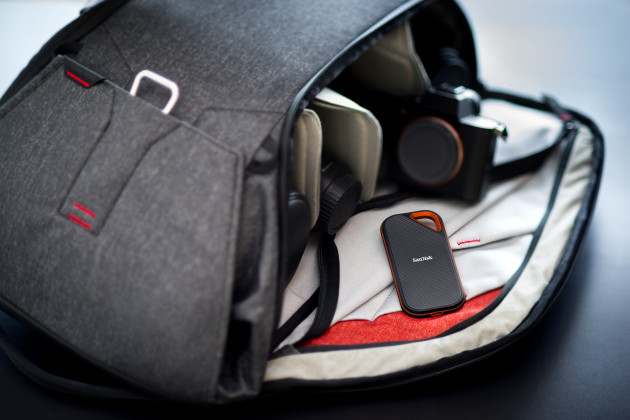Profile: Pauly Vella
This content is sponsored by Sandisk.
Photographer Pauly Vella is one of Australia’s most followed Instagrammers, boasting a huge audience of more than 245,000 followers who share his love for beautiful travel and landscape images.
We sat down for a chat with the Sydney native to find out how SanDisk's efficient storage is key to his workflow.
How did you get started in photography?

I first started taking an interest in photography when I was introduced to Instagram by my partner in 2011. It started as a hobby, taking photos on my iPhone 4 of things I found interesting.
As I progressed and found a style that I wanted to capture, it led me to start using my dad’s bridge camera which had a digital zoom and some basic DSLR settings. I started photographing local wildlife and tried surfing photography. Soon I started planning trips for sunrise at beaches, exploring bushwalk tracks for waterfall shots, and became really interested in post-processing images.
I purchased my first DSLR, a Nikon D5100, to start taking long exposures and controlling exposure, learning how to use shutter speed, ISO and aperture. I started with the kit lenses and grew a collection. I learned more about photography as I went.
How would you describe your style?

Early on, I was really inspired to take landscapes and photos around the ocean at local spots on the NSW Central Coast where I used to travel as a kid. I wanted to capture the power of the ocean through waves and beach images.
Through trial and error, I learned a lot, and it really helped to meet local photographers around the coast and gain different ideas about composition and tips for using the camera along the way.
As I started to travel around Australia and take photos in new places, I began to focus more on capturing new experiences, and when I started to travel internationally, discovering different cultures to share with my audience. It was a change in style as I progressed, butI still love to share a variety of images and enjoy the challenges that come with capturing something I haven’t before.
What’s the biggest challenge when capturing images while you’re travelling?
I think the main issue is with storage of RAW files and making sure you have successfully emptied your cards onto a hard drive. It’s tough when you have been shooting all day and have just a few hours downtime to process cards and make space for the next day, but that is the fun of it all.

Although I carry several spare CF and SD cards in my pack, there have been occasions when I have been caught out with RAW files taking too long to store and I’ve lost content.It is really important to have an efficient process for storing your digital negatives and having clear space that’s quick to access.
That’s why I always carry my SanDisk Extreme PRO Portable SSD. It’s fast so I can quickly back up my files, small enough to not take up too much room when I’m on the road, and durable enough to withstand knocks or scrapes.
What tools do you use to back up your content both in and out of home?
On the road, it’s always a challenge to keep memory clear to ensure you can transfer images from CF or SD cards onto hard drives and process images.
A lot of what I do with travel photography does not allow much time to process, so I keep editing to a minimum.
I use a SanDisk Extreme PRO Portable SSD to store my images, which is really quick to transfer RAW files from a typical day on location. It has 1TB storage so it easily stores all of my files while travelling.
I often don’t have time to post-process or transfer all my images so it’s important I can do this as quickly as possible, and the SanDisk Extreme PRO Portable SSD makes it so much easier. It’s been a game changer to have in my kit.
What else is in your camera bag?
My main camera is a Nikon D810, which will have my 24mm wide angle attached. I also use a D750 as a second body.
I have a range of lenses I carry with me but if I had to choose a top three it would be my 50mm f/1.4, 70-200mm f/2.8 and my 85mm f/1.4.
I carry a MacBook Pro for editing on the go and, of course, my SanDisk Extreme PRO Portable SSD to store RAW files. I also store a few choice lens filters and a lens brush. I learnt the hard way to always have a waterproof backpack and microfibre cloths when on location. These are all essential.
What’s your most memorable photography experience?

I think one of my favourite experiences was being able to photograph where my parents are from in Malta. It truly is such a beautiful part of Europe.
The culture is so rich and from the beautiful clear ocean to the streets full of life, it was a photographer’s dream! I was able to capture the Azure Window, which was a natural rock arch over the ocean on the island of Gozo.
Unfortunately, it has since collapsed into the ocean [in 2017] so I am grateful I had the opportunity to see it in person after hearing so many stories about it from my family.
You can see more of Pauly Vella’s travel and lifestyle photography on Instagram @paulyvella.


